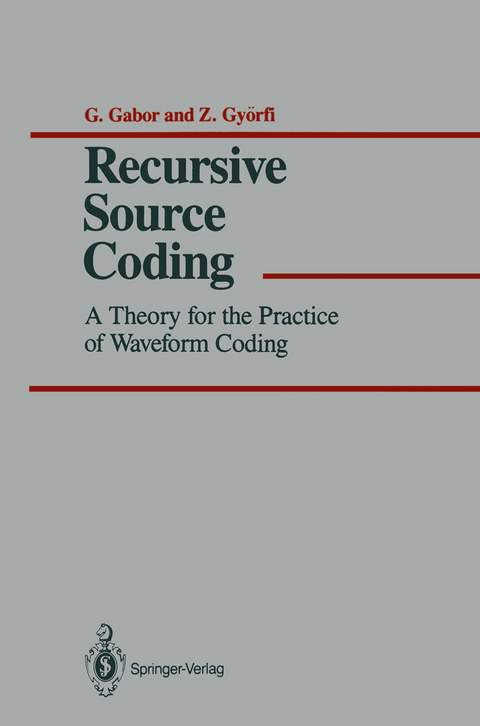
Recursive Source Coding
Springer-Verlag New York Inc.
978-1-4613-8651-3 (ISBN)
1 The Fine-McMillan Recursive Quantizer Model.- 1.1 Source, Channel, Reproduction.- 1.2 The Linear Deltamodulator.- 1.3 The Definition of a Fine-McMillan Recursive Quantizer.- 1.4 The Design Problem.- 1.5 The Simple Quantizer.- 1.6 Theoretical Limits with Given Channel Capacity.- 2 Structural and Design Problems of a Recursive Quantizer.- 2.1 The McMillan Structure Problem.- 2.2 Fine’s Principle of Minimum Search.- 2.3 The Principle of Minimum Search and the Property of Equimemory.- 2.4 Optimality and the EM Property—the McMillan Structure Theorem.- 2.5 Strong-optimality, MS and EM Properties—the Reformulation of the McMillan Structure Theorem.- 2.6 The Proof of the Structure Theorem.- 2.7 Feed-forward Design for the Causal Case.- 2.8 Trellis Coders in Delayed Recursive Quantizers.- 3 Differential Predictive Quantizers.- 3.1 Additive Decoding.- 3.2 Additive Decoding, MS and EM Properties—the Definition of the Differential Predictive Quantizer.- 3.3 A Misunderstanding Concerning the Predictor.- 3.4 Additive Decoding and the Feed-forward Principle.- 4 Design Examples—Speech Compression.- 4.1 The Stationary Model of Speech.- 4.2 The Design of a DPC.- 4.3 The Design of a Fine-McMillan Type RQ.- References.- Appendix 1.- Appendix 2.- Appendix 3.
| Zusatzinfo | 102 p. |
|---|---|
| Verlagsort | New York, NY |
| Sprache | englisch |
| Maße | 155 x 235 mm |
| Themenwelt | Mathematik / Informatik ► Informatik ► Datenbanken |
| Informatik ► Grafik / Design ► Digitale Bildverarbeitung | |
| Informatik ► Theorie / Studium ► Kryptologie | |
| Mathematik / Informatik ► Mathematik ► Algebra | |
| Mathematik / Informatik ► Mathematik ► Angewandte Mathematik | |
| Technik ► Elektrotechnik / Energietechnik | |
| Technik ► Nachrichtentechnik | |
| ISBN-10 | 1-4613-8651-9 / 1461386519 |
| ISBN-13 | 978-1-4613-8651-3 / 9781461386513 |
| Zustand | Neuware |
| Informationen gemäß Produktsicherheitsverordnung (GPSR) | |
| Haben Sie eine Frage zum Produkt? |
aus dem Bereich


